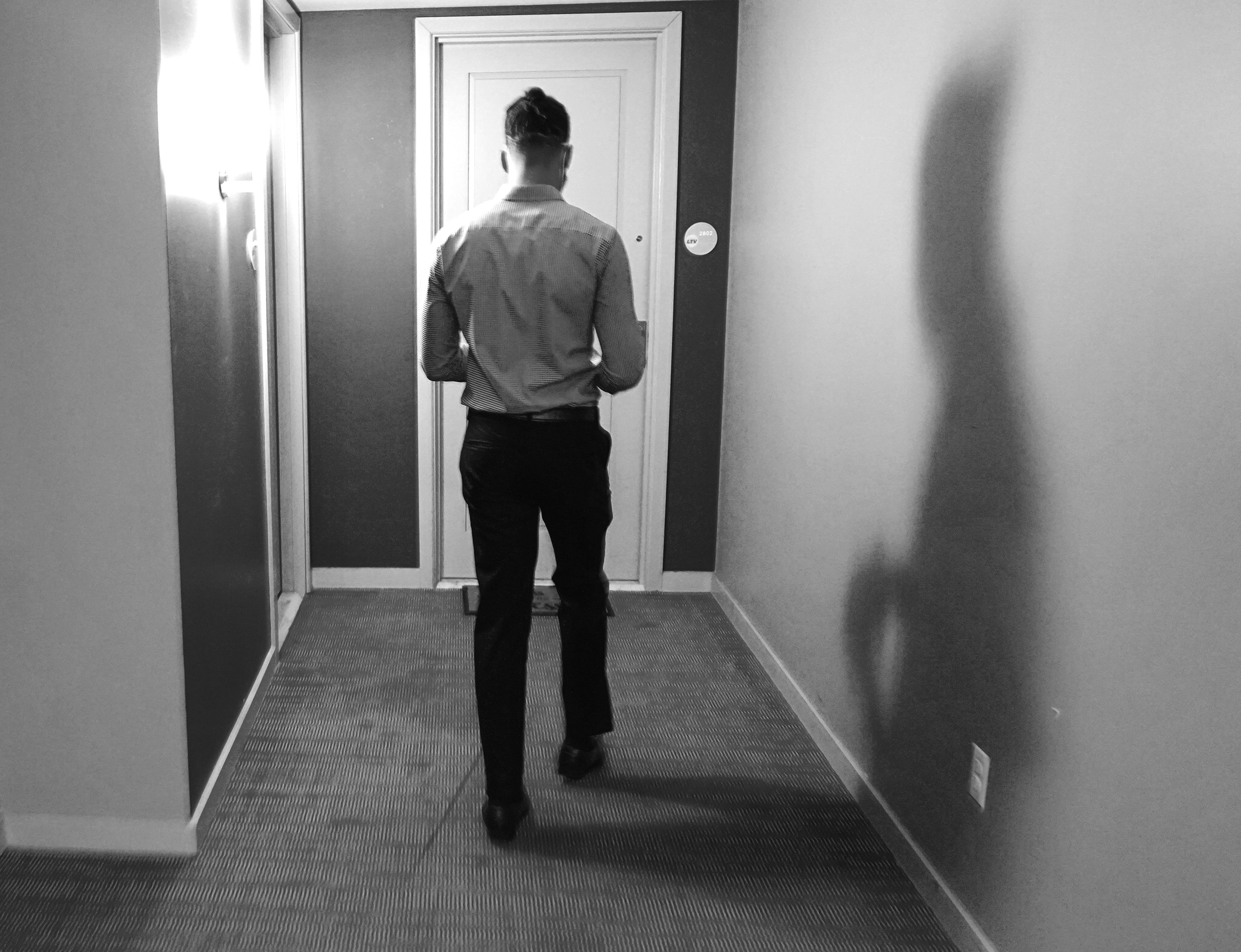
Texas’ Eviction Craze
Amid record heat and a new COVID wave, state residents are being threatened with homelessness in rising numbers.

Miguel Valencia has a court date on July 29. He’s facing eviction from his home in Garland, just northeast of Dallas. He’s two months behind on the rent for his house, which has been in disrepair due to foundation problems since he moved there in 2019.
After about a year of reporting the problems—cracks in the walls, doors unable to close—Valencia’s building management company agreed to fix the issues. But Valencia, along with his mother and younger brother who live with him, couldn’t be onsite during the renovations, so they were hit with a non-renewal notice. Valencia had nowhere to go, so the company agreed to let the family stay for two more months with the caveat that rent would go up by $500 per month.
“I can’t pay what they’re asking for and then still have enough money to move,” Valencia said. “They just made it really difficult for me. I have no credit. They just put that eviction on my record, so it made it even hard for me to find another place for my family.”
Evictions are at or above pre-pandemic levels in the state’s largest cities, according to data from Eviction Lab, which tracks weekly evictions in 31 cities and six states across the U.S. (Eviction Lab does not track data for San Antonio). Houston ranks second among the cities the lab tracks, behind New York City. Since the start of the pandemic, the South Texas city has seen more than 101,000 eviction filings. The raw numbers are stark, but it’s worth noting that evictions are naturally higher in more populous cities.
Dallas and Fort Worth are also near the top of the nationwide list for the number of evictions, with landlords in each filing more than 53,000 eviction claims since March 2020. Austin—the city with the most robust renter protections—had a fraction of what the other cities did, with just 7,616 filings in the same time period. Even so, evictions in the state capital crested pre-pandemic levels at the beginning of this year. These numbers are likely an undercount, as the data show only those cases where landlords took evictions to court. Cases in which tenants immediately complied with a written notice to vacate don’t make it into these final numbers.
These rising evictions are a major threat to Texas’ renters, as available rental properties dwindle and rent prices spike. In Houston, median rent for a one-bedroom apartment has gone up 15 percent in the past year—the mildest price increase of all of the largest Texas cities. In Austin, the typical renter is paying nearly 30 percent more for a one-bedroom apartment than they were a year ago, about a $350 hit to their budget each month, according to rental company Zumper.
“Texas tends to be on the more landlord-friendly, more eviction-friendly side of the spectrum.”
Until recently, Texas renters had rare access to a parachute in the form of billions of dollars in federal, state, and local funding for rental assistance. These programs were crucial—in Houston, one funding round ran out in just two hours. But in recent months, cities have begun lifting their eviction moratoria, and funding has dwindled, leaving renters once again vulnerable to eviction in a state that has historically been eviction-happy.
“Texas tends to be on the more landlord-friendly, more eviction-friendly side of the spectrum,” said Peter Hepburn, a research fellow with the Eviction Lab. “There are a number of regulations that make the eviction process relatively cheap, fast, and easy for landlords to pursue. Those sorts of regulations, those sorts of statutes tend to result in higher eviction filing rates.”
There is not a lot of data on where people actually go when they get evicted, but the options are scant. People may move in with friends or family if they have that available safety net; they may, out of desperation, move into a place with significant problems like mold, safety issues, or no climate control, or they may be forced into homelessness.
As more Texans face this threat, record heat across the state imperils housing-insecure residents much more than those with reliable access to air conditioning. Cities, where evictions are most common, often feel extreme heat more than rural areas due to the urban heat island effect—where an abundance of concrete and a lack of greenery lead to high temperatures. Even more, cities’ lowest-income residents often live near industrial zones or highways, areas that produce their own excess heat.
Valencia, the Garland resident who’s facing eviction, found a place for his family to go for the near term. It’s about an hour and a half away from Garland, where Valencia works as a warehouse supervisor. But he has no choice but to commute.
“That’s really the only option that I have to put my family in a home,” Valencia said.
Evictions are traumatic events. In some cases, residents are escorted out of their homes by law enforcement, their belongings piled up outside. Evictions have been linked to persistent mental and emotional strain; one study by researchers from Rice and Harvard Universities found lingering effects up to two years after the eviction. The same study found workers who had been evicted were up to 15 percent more likely to be fired from their jobs as a result. Another study found that kids whose families went through evictions were more likely to be absent from school—and even had a higher risk of lead poisoning than their peers.
“You can imagine the upheaval of losing your home, especially when you don’t have the means to provide another one right away, is super stressful and also has health effects,” said Rachel Kimbro, a sociology professor at Rice University who co-authored the study on eviction’s material and emotional effects.
Despite these problems, housing security continues to be seen as the result of an individual circumstance rather than a systemic failure. In the 1980s, the Department of Housing and Urban Development had the second highest budget behind the Department of Defense. Today, the federal housing department barely cracks the top 10.
In Texas, a State Supreme Court emergency order mandates that justices of the peace let tenants facing eviction know about emergency rental assistance and abate the eviction for 60 days if they’re interested. That protection expires in September. Now, nonprofit Texas Housers estimates that less than 20 percent of Texans live in a place that has remaining emergency rental assistance available.
“What we’re seeing right now is kind of a perfect storm of bad elements leading to rising and evictions pretty much across the board in the state of Texas,” said Ben Martin, research director for Texas Housers.
Martin said no Texas cities have been sweeping success stories when it comes to preventing evictions. But many are trying to expand their protections. Austin is looking to establish a “right to cure” ordinance, which would allow residents to halt eviction proceedings by paying or “curing” any lease violations. San Antonio recently received funding to pilot a right-to-counsel program for eviction courts.
Dallas recently partnered with Child Poverty Action Lab to start tracking eviction data. January Advisors—which also assists with the Eviction Lab—has tools focused on Harris County. Jeff Reichman, principal with January Advisors, said having trustworthy data on evictions is a crucial step to understanding what solutions are necessary.
“[We can ask] how big of a problem is this? And how much would it cost to solve this problem?” Reichman said. “What areas of town are hardest hit? What landlords should we be talking to enroll in rental assistance programs? There are all of these questions that can cascade from [the data].”
But a large-scale vantage point for evictions in the state still doesn’t exist. And even if some of the largest cities are providing protections, those in smaller cities are left high and dry. A piecemeal approach, where each jurisdiction provides a varying level of protection, isn’t enough, Martin said. He said sweeping change needs to happen, from eviction court reform to funding reprioritization to a major push for affordable housing development.



